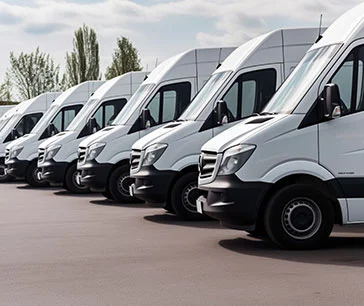Exploring the Leading 10 Automotive and Transportation Markets of Q4 2023 and Their Future Potential

The automotive and transportation industry is undergoing rapid advances, driven by technological innovation. Electric vehicles, autonomous driving technologies, and smart connectivity are transforming the way we move. These advancements not only enhance efficiency and safety but also contribute to a sustainable future, addressing environmental concerns and shaping the next era of transportation.
In the fourth quarter of 2023, the sector witnessed remarkable growth. Allied Market Research has taken initiatives to provide insights into the top 10 markets that have gained huge popularity, exploring their current status, growth drivers, and future prospects.
Hydrogen Vehicles
The key factors that drive the growth of the global market are increase in environmental concern, government initiatives for development of hydrogen fuel cell infrastructure and rise in investments for R&D activities. Moreover, factors such as high initial investment in infrastructure and lack of refueling infrastructure for HFCV are the factors that hinder the growth of the market. The global hydrogen fuel cell vehicle market size was valued at $1.5 billion in 2022, and is projected to reach $57.9 billion by 2032, growing at a CAGR of 43% from 2023 to 2032.
Hydrogen Fueling Stations
Hydrogen fueling stations have gained tremendous focus after the successful progress with cell electric vehicles, which came into existence depending on hydrogen power. Currently, the increased number of retail hydrogen fueling locations in select markets supports the initial rollout of fuel cell electric vehicles (FCEVs). Manufacturers including Honda, Hyundai, and Toyota are currently offering production FCEVs for sale or lease to customers in markets where hydrogen fuel is available, primarily in California (U.S.). The global hydrogen fueling station market is predicted to be valued at $756.4 million in 2024 and reach $22,015.6 million by 2035, growing at a CAGR of 35.9% from 2024 to 2035.

Automotive Voice Recognition System
In cars, voice recognition systems typically consist of a microphone to collect the driver's voice, a speech recognition engine that processes and interprets the spoken commands, and a control module that executes the appropriate actions based on the recognized orders. Factors such as demand for enhanced safety and regulatory requirement from the governments and rising adoption of digital technologies supplement the growth of the market. In addition, integration with other technology and introduction of the voice commerce (V-commerce) are factors projected to create investment opportunities in the market. The global automotive voice recognition system market size was valued at $3.4 billion in 2022, and is projected to reach $14.7 billion by 2032, growing at a CAGR of 16.1% from 2023 to 2032.
Truck Platooning
Truck platooning is a technologically advanced method of lining up several vehicles in close proximity to one another on a highway in order to increase road safety, decrease fuel consumption, and improve efficiency; to achieve these advantages, companies are leveraging a combination of connected vehicle technology and automation. According to a recent study published by the American Journal of Transportation, currently, there is a shortage of 80,000 drivers in the U.S. alone; the association also estimated that by 2030, there will be a shortage of 160,000 truck drivers. As the U.S majorly relies on its trucking industry for inter-country goods transport, the demand for truck platooning technologies is expected to rise in coming years. The global truck platooning market size was valued at $728.9 million in 2025, and is projected to reach $6,092.2 million by 2035, growing at a CAGR of 23.7% from 2025 to 2035.
Autonomous Vehicles
Autonomous vehicles operate with less driver interference or without driver interference. Self-driving vehicles process the data produced by their sensors to establish navigation routes and make real-time decisions, such as stopping, accelerating, decelerating, and evading obstacles. Market expansion is being propelled by various factors, including the development of interconnected infrastructure facilitated by technological advancements, a decrease in traffic congestion coupled with enhanced safety measures, and a rise in trend of investments and collaborations among companies operating in the autonomous vehicle sector. The global autonomous vehicle market size was valued at $60.3 billion in 2025, and is projected to reach $448.6 billion by 2035, growing at a CAGR of 22.2% from 2025 to 2035.

Low Speed Electric Vehicles
The growth in popularity of low-speed EVs is due to stricter pollution norms and an inclining trend towards more fuel-efficient vehicles with low emissions. As EVs operate on batteries they rely on batteries as a fuel source. Electric vehicles were primarily designed to replace conventional ways of transport as they lead to environmental pollution. Low-speed electric vehicles have gained popularity owing to numerous technological advancements. The electric vehicle outperforms the conventional vehicle providing higher fuel economy, low carbon emission, and maintenance. The global low speed electric vehicle market size was valued at $6.8 billion in 2022, and is projected to reach $27.6 billion by 2032, growing at a CAGR of 15.1% from 2023 to 2032.
Golf Carts
A golf cart is a type of low-speed vehicle driven by electric motors, which is gas-powered and is specifically envisioned for utilization in golf courses for transportation of golfers and equipment within the course premises. Increase in urbanization & industrialization, shift toward mall culture, hi-tech & smart residential and commercial housing projects, and rise in utilization of golf cart vehicles in hotels, hospitality, tourism industries, and amusement parks are anticipated to boost growth of the market globally. The use of golf carts for short trips in educational institutions, such as colleges & universities and in airports are expected to further propel demand for golf carts between. The global golf cart market size was valued at $1.1 billion in 2022, and is projected to reach $2.1 billion by 2032, growing at a CAGR of 6.5% from 2023 to 2032.
Battery Management System
A battery management system (BMS) is a technology which is designed to monitor the performance of a battery pack. Factors such as accelerated adoption of electric vehicles (EVs) and hybrid electric vehicles (HEVs) and a surge in industry preference toward the utilization of lithium-ion batteries drives growth of the BMS market. In addition, growth in adoption of rechargeable batteries across multiple end-use industries propels the market growth. The global battery management system market size was valued at $7.5 billion in 2022, and is projected to reach $41 billion by 2032, growing at a CAGR of 19.1% from 2023 to 2032.
Cold Chain Logistics
Cold chain logistics is the technology and process that allows safe transport of temperature-sensitive goods and products such as fresh agricultural products, seafood, frozen food, photographic film, chemicals, and pharmaceutical drugs along with the supply chain. Factors such as an increase in the number of refrigerated warehouses and growth in the pharmaceutical sector are expected to drive the growth of the market. In addition, growth in the processed food sector is anticipated to boost the market growth. The global cold chain logistics market was valued at $202.17 billion in 2020, and is projected to reach $782.27 billion by 2030, registering a CAGR of 14.6% from 2021 to 2030.

Fleet Management
Fleet management is the management of commercial vehicle operations on a large scale. Factors such as rising concerns about fleet safety, mandatory government regulations towards vehicle maintenance & tracking, need for operational competency in fleet management, and increase in the adoption of wireless technology owing to their low cost & availability supplement the market's growth across the globe. The global fleet management market was valued at $19.47 billion in 2020, and is projected to reach $52.50 billion by 2030, registering a CAGR of 10.6% from 2021 to 2030.
The Bottom Line
The future of the automotive and transportation industry promises a revolution in mobility. Electric and autonomous vehicles will become mainstream, fostering sustainability and reducing emissions. Advanced connectivity and smart infrastructure will redefine the travel experience. Collaborations between tech and automotive companies will drive innovation, shaping a more efficient and interconnected transportation landscape. To get detailed insights into the food & beverage industry, feel free to contact AMR analysts today!



